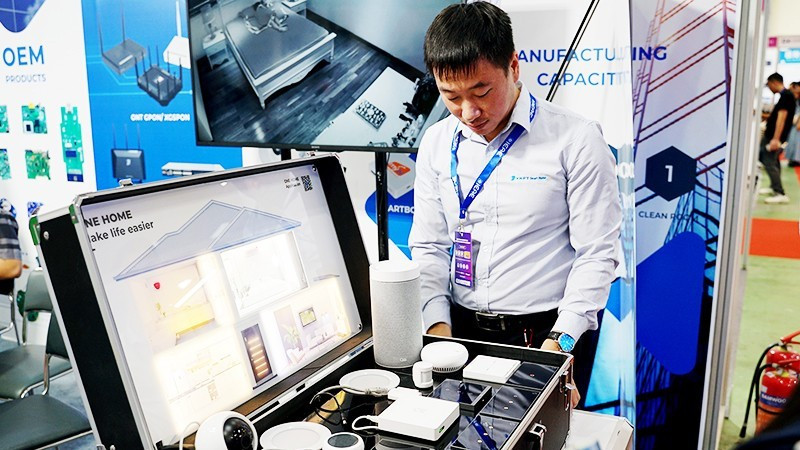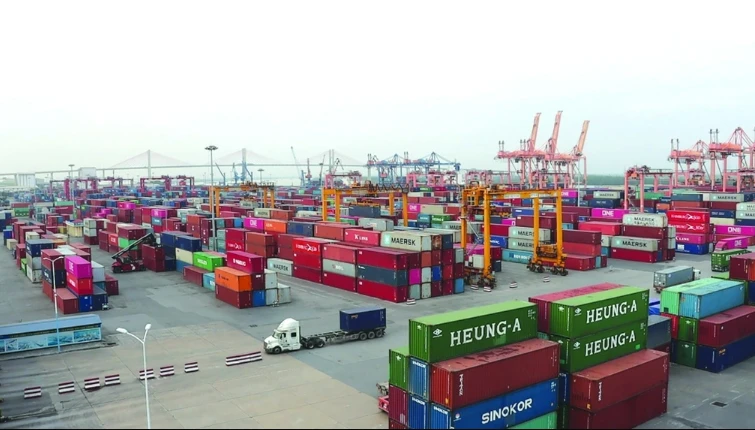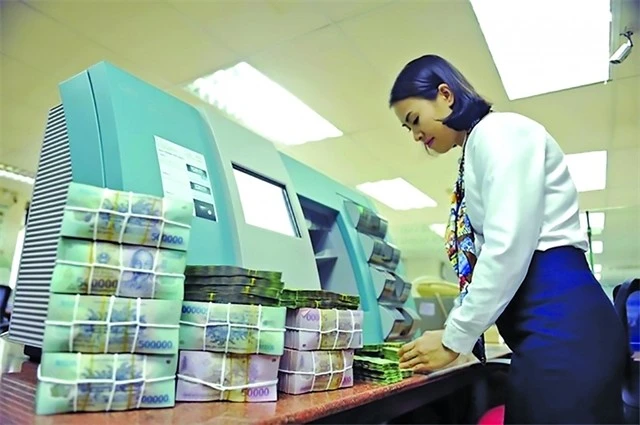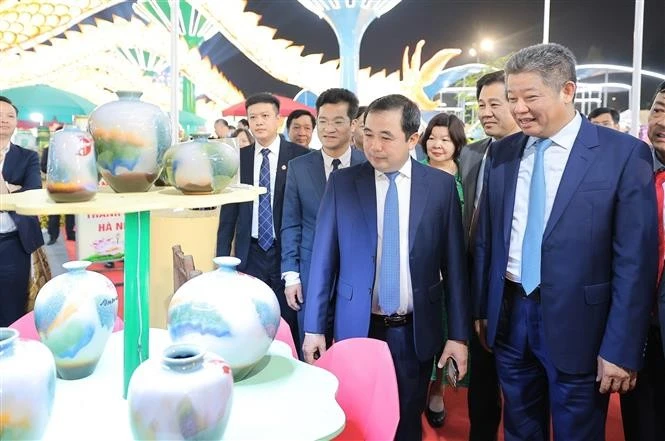Pham Thai Son, General Director of NTQ Solution, said that Vietnamese technology enterprises have never been as confident about entering global markets as they are today. From outsourcing, Viet Nam’s digital technology industry is gradually mastering advanced technologies.
Efforts toward a knowledge-based creative economy
Fifteen years ago, NTQ Solution was established with an initial focus on software outsourcing to meet the needs of foreign clients. Through continuous learning and strengthening research and development capabilities, in recent years the company has moved up the value chain to engage in more advanced production and design processes. From low-value products, NTQ Solution’s team — like many other Vietnamese tech firms — has evolved to become part of the “Make in Viet Nam” technology movement.
“Viet Nam has a huge advantage with its young technological workforce, eager to face challenges and explore new fields. Current policies also create favourable conditions for businesses — from capacity building and market promotion to raising product standards toward global integration,” Son explained.
NTQ Solution is just one among thousands of enterprises contributing to the remarkable growth of Viet Nam’s digital technology sector. The clearest evidence is the digital product export value of 78.1 billion USD in the first half of 2025, up 20.5% year on year. This figure not only highlights the competitiveness of Vietnamese firms in the digital sector but also signals the transition from a “processing economy” to a knowledge-based creative economy.
Alongside digital technology, Viet Nam’s handicraft industry is also asserting its distinctive identity in the global market. With craftsmanship and creativity, Vietnamese handicrafts have reached 163 countries and are among the top ten highest-value export categories.
Ceramic, bamboo, wooden, and embroidered products are not merely commodities — they serve as cultural ambassadors of Viet Nam in global trade, where tradition and creativity intertwine in every detail.
According to Nguyen Thanh Tung, Director of TOMATO Handmade, Vietnamese handicrafts have vast export opportunities thanks to their sophistication and ingenuity. These products also benefit from tariff preferences in many countries.
“In markets where consumers increasingly value cultural uniqueness, refinement, distinctiveness, and sustainability, Vietnamese handicrafts are gaining more attention and opportunities,” Tung said.
According to WIPO’s assessment, Viet Nam not only excels in creative goods exports but also ranks first globally in high-tech exports, accounting for 36.1% of total trade turnover. This reflects the ability of Vietnamese enterprises to absorb, master, and improve technologies rapidly, especially amid deepening global integration.
Towards an endogenous creative export economy
Behind the impressive figures, however, lie significant challenges. The GII 2025 report shows that most of Viet Nam’s creative export value still comes from the foreign direct investment (FDI) sector, while domestic innovation capacity remains limited.
Spending on research and development (R&D) currently stands at only 0.4% of GDP, far below the global average. The number of patent applications originating from Viet Nam is just 0.7 per 1 billion USD of GDP at purchasing power parity (PPP), ranking 66th in the world. This indicates that domestic enterprises still struggle to create intellectual property and knowledge assets, meaning the added value of exported goods remains disproportionate to their potential.
Notably, while creative goods exports have surged, creative service exports such as film, digital content, design, online games, and cultural services, remain low, accounting for just 0.1% of total trade (ranked 95th globally). This shows that Viet Nam still leans toward “tangible creativity” and has yet to fully exploit “intellectual creativity,” where value addition and copyrights play a decisive role.
According to Do Tien Thinh, Deputy Director of the National Innovation Centre (NIC), Viet Nam has built a strong legal and institutional framework for innovation, a solid foundation that now needs to be extended through mechanisms that encourage R&D investment, support the commercialisation of research products, and strengthen linkages between research institutes, universities, and enterprises.
“One of our weaknesses is the shortage of top-tier experts — leaders capable of mastering strategic technologies,” Thinh noted.
In reality, the gap between creativity and production remains significant. Viet Nam exports a large volume of goods, but the “Vietnamese creative content” within them is still thin. Experts suggest that boosting domestic creative capacity requires greater R&D investment, especially in potential sectors such as biotechnology, new materials, automation, digital content, and cultural and creative industries — from design and fashion to film and gaming. This will help expand the country’s creative boundaries, strengthen national branding, and align Vietnamese creative products with a modern, innovative, and humanistic national image.
Synchronising policies, resources, and strategic vision will be the key to shifting from “FDI-driven creative exports” to “Vietnamese-led creative exports.”
Leading the world in creative goods exports is not just a ranking milestone, but also a positive signal of an economy transitioning toward knowledge-based growth. From the skilful hands of artisans to the engineers shaping international tech markets, Viet Nam is steadily building a comprehensive creative ecosystem where culture and science progress hand in hand.
However, to consolidate its position and move further ahead, Viet Nam must nurture endogenous creativity, viewing R&D and branding as pillars of sustainable development. Only then will Vietnamese goods not merely be “made in Viet Nam” but truly embody Vietnamese intellect and creativity — contributing meaningfully to the nation’s growing presence on the global innovation map.
Maintaining its impressive growth momentum over the past decade, Viet Nam has proven its capacity for deep integration into global creative value chains. In 2025, according to the GII report, the share of creative goods exports reached 8.8% of total trade, placing Viet Nam at the top of the world rankings — a remarkable milestone for a developing country.
















